|
 Secure Site
Secure Site
|
 |
Archive for the 'Meditation Timers' Category
 Meditation Problem: You are Tired All the Time
Culprit: Your Adrenal Glands
They’re responsible for secreting the fight-or-flight hormones adrenaline and cortisol, which surge as a response to stress—whether the prehistoric-days type, like being chased by a tiger, or the modern-day version, like financial worries or your mother-in-law. But when you’re feeling stressed all the time, those glands may become overworked and can tire out—a condition commonly called adrenal fatigue, says Keenan. The inability to secrete enough cortisol during the day can cause energy dips, then spikes at night that can interfere with restful sleep.
To give your adrenal glands a chance to recharge, Keenan recommends meditation, which she thinks of as parking the body in neutral. “Meditation has the effect of slowing down the production of cortisol for a while,” she says. Try sitting quietly and clearing your mind. Set your Zen Clock for at least five minutes a day and increase until you are able to sit comfortably for 20 minutes each day. Vitamins B5 and C have also been shown to support adrenal function, says Jacob Teitelbaum, the Kona, Hawaii–based medical director of the Fibromyalgia & Fatigue Centers and the author of From Fatigued to Fantastic!. He recommends getting at least 50 milligrams of B5 and 500 milligrams of C daily. Other stress-reduction techniques work well, too. “Exercise is particularly effective,” says Park.
adapted from RealSimple.com
 Meditation Tools and Timers by Now & Zen, Inc. Now & Zen Meditation Tool Store
1638 Pearl Street
Boulder, CO 80302
(800) 779-6383
Posted in Chime Alarm Clocks, intention, Meditation Timers, Meditation Tools, mindfulness practice
 Butterflies Plate #21, Natural History of Britain on the patio
the afternoon drifts along
with the butterfly.
– Patricia J. Machmiller
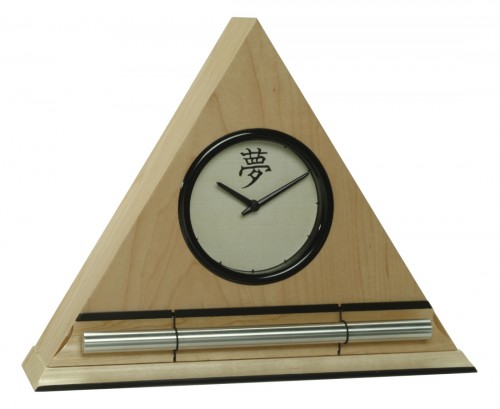 Maple Dream Kanji Zen Alarm Clock, progressive chime alarm clock
Now & Zen – The Zen Alarm Clock Store
1638 Pearl Street
Boulder, CO 80302
Posted in Beauty, Japanese Inspired Zen Clocks, Japanese Poetry, Meditation Timers, Meditation Tools, mindfulness practice, Now & Zen Alarm Clocks, Progressive Awakening
 time your walking meditation with the Digital Zen Timer by Now & Zen, Inc. Ways to Relive Stress:
Get rid of nervous tension by inhaling as you take four steps, then exhaling for four steps. Repeat for at least three minutes (the longer, the better). Work up to six to eight steps per inhale and exhale. Use your Digital Zen Timer on the ‘Repeat Mode’ so that it will chime every three minutes to time yourself.
Now & Zen Headquarter Store
1638 Pearl Street
Boulder, CO 80302
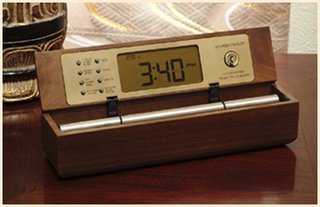 Timers and Alarms with Chimes
Posted in Chime Alarm Clocks, Meditation Timers, Meditation Tools, mindfulness practice, nature, Now & Zen Alarm Clocks, Yoga Timer, Zen Alarm Clock
 energizing yoga It’s three o’clock, and despite your novel-length to-do list, the only thing that holds your attention longer than 30 seconds is the thought of a caffeine or sugar fix. You’d get a better and more sustained boost, though, by practicing a midday meditation.
Typically associated with relaxation, meditation also jump-starts energy and clears a foggy head, says Eric Harrison, director of Australia’s Perth Meditation Centre and author of “Flip the Switch: 40 Anytime, Anywhere Meditations in 5 Minutes or Less.” “If you meditate consciously and don’t succumb to sleep, your mind becomes calm and clear,” he explains. And unlike the usual drowsiness cures, a few minutes of meditation can keep you alert all afternoon.
One of Harrison’s favorite quick meditations involves tuning in to the sounds we generally try to ignore, which gives the chattering mind a chance to rest. So close your office door or find a quiet space and follow these easy steps — and that cafe run might soon be a thing of the past.
 yoga at work Listening Meditation
Clear a space. Set your Zen Meditation Timer for 5 minutes. Take a moment to remove some of the clutter in your immediate area — mugs, scattered pens, loose papers. This helps you transition into meditation mode and sets the stage for a calmer, more productive afternoon.
Log off. Turn off your computer and silence the ringers on your work and cell phones. This limits physical distractions while freeing up your mind to focus on listening.
Close your eyes and normalize your breathing. Sit up straight and take long, deep, deliberate inhalations, followed by even longer exhalations. Continue this breathing throughout the entire exercise.
Begin listening. Tune in to the sounds around you as if you were listening to music. Let your ears explore both background and foreground noises. Are there any sounds you can hear now that you didn’t before? What’s the most distant sound you can hear? What’s the closest? What music or harmonies do they create together?
Notice your mood. Suspend any judgments about the sounds that normally irritate you, like the hum of the copier, and just listen.
Check your body. Locate any tense feelings within, and concentrate on relaxing each one of them.
When you hear the Zen Meditation Timer Chime, after several minutes, open your eyes. Notice the difference in your energy level. If you’re still feeling groggy, distracted, or unfocused, continue the listening meditation for a minute or two more.
adapted from Body + Soul, June 2007 by Donna Garlough
 maple zen timer for meditation and yoga
Now & Zen
1638 Pearl Street
Boulder, CO 80302
(800) 779-6383
Posted in Bamboo Chime Clocks, intention, Meditation Timers, Meditation Tools, mindfulness practice, Now & Zen Alarm Clocks, Well-being
 meditation improves attention New research shows that meditation can help you improve your ability to concentrate in two ways. First, it can make you better at focusing on something specific while ignoring distractions. Second, it can make you more capable of noticing what is happening around you, giving you a fuller perspective on the present moment.
Some of the most fascinating research on how meditation affects attention is being conducted by Antoine Lutz, PhD, an associate scientist at the Waisman Laboratory for Brain Imaging and Behavior at the University of Wisconsin at Madison, in collaboration with Richard Davidson and the Laboratory for Affective Neuroscience at the University of Wisconsin. Their work has shown that concentration meditation, in which the meditator focuses complete attention on one thing, such as counting the breath or gazing at an object, activates regions of the brain that are critical for controlling attention. This is true even among novice meditators who receive only brief training. Experienced meditators show even stronger activation in these regions. This you would expect, if meditation trains the brain to pay attention. But extremely experienced meditators (who have more than 44,000 hours of meditation practice) show less activation in these regions, even though their performance on attention tasks is better. The explanation for this, in Lutz’s view, is that the meditation training can eventually help reduce the effort it takes to focus your attention. “This would be consistent with traditional accounts of progress in meditation practice. Sustaining focus becomes effortless,” Lutz says. This suggests that people can immediately enhance concentration by learning a simple meditation technique, and that practice creates even more progress.
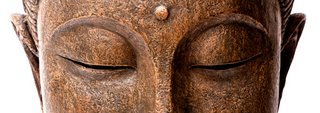 Buddha The researchers also looked at whether vipassana meditation training can improve overall attention. (Vipassana means “to see things as they really are,” and the meditation techniques are designed to increase focus, awareness, and insight.) Researchers label our inability to notice things in our environment as “attentional blink.” Most of us experience this throughout the day, when we become so caught up in our own thoughts that we miss what a friend says to us and have to ask her to repeat it. A more dramatic example would be a car accident caused by your thinking about a conversation you just had and not noticing that the car in front of you has stopped. If you were able to reduce your attentional blink, it would mean a more accurate and complete perception of reality—you would notice more and miss less.
To test whether meditation reduces attentional blink, participants had to notice two things occurring in rapid succession, less than a second apart. The findings, published in PLoS Biology, reveal that the meditation training improved the participants’ ability to notice both changes, with no loss in accuracy.
What explained this improvement? EEG recordings—which track patterns of electrical activity in the brain, showing precise moment-by-moment fluctuations in brain activation—showed that the participants allocated fewer brain resources to the task of noticing each target. In fact, the meditators spent less mental energy no-ticing the first target, which freed up mental bandwidth for noticing what came next. Paying attention literally became easier for the brain.
As a result, Lutz and his colleagues be-lieve that meditation may increase our control over our limited brain resources. To anyone who knows what it’s like to feel scattered or overwhelmed, this is an ap-pealing benefit indeed. Even though your attention is a limited resource, you can learn to do more with the mental energy you already have.
adapted from Yoga Journal, by Kelly McGonigal
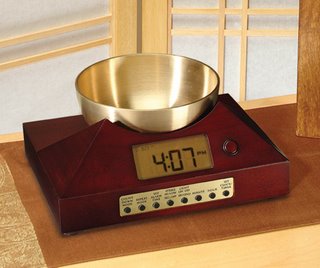 Zen Timepiece with brass singing bowl, a meditation timer Now & Zen
1638 Pearl Street
Boulder, CO 80302
(800) 779-6383
Posted in Bamboo Chime Clocks, intention, Meditation Timers, Meditation Tools, mindfulness practice, Now & Zen Alarm Clocks, Well-being, Yoga Timer
 morning meditation practice with meditation timer Sense the Stillness
You don’t have to be a regular yoga or meditation practitioner to reap the benefits of a morning meditation ritual. Start with five minutes daily, using the guidelines that follow. Then over the course of a few weeks — or when you are ready — gradually work up to 10 minutes. Remember, with meditation it’s quality, not quantity, that matters.
Start with awareness. Rather than lunge out of bed, Novie suggests waking up slowly. “Spend a few minutes just becoming conscious of the sensations of your body. Awareness is such a beautiful way of entering your day.” Once you’re up, resist the temptation to check your e-mail, flip on the radio, or do any of the other countless things that draw you out of yourself and into the concerns of the world. Instead, keep the focus inward.
Find a comfortable spot. Practice your five minutes of meditation anywhere you like (the bedroom floor, a favorite chair) except the bed, where you may fall back to sleep. Be sure to set your Singing Bowl Meditation Timer (Now & Zen, $199.95) for 5 minutes so that your session can end with a calm chime. To enhance the sacred aspect of her meditation space, Novie set up a small altar in her living room that she uses only for meditation, giving the space a positive energy of its own.
Sense your breath. Close your eyes. Feel your breath moving in and out of your body without controlling it. Bring your attention to the rise and fall of your abdomen or to the tip of your nose. The more awareness you bring to breath and body, the more grounded in your body you’ll become. This, in turn, will help relieve some of the stress that comes with getting through your morning.
Don’t try to block your thoughts. Your mind will wander — that’s what it’s designed to do. Rather than try to fight off thoughts as they emerge, acknowledge them, but don’t engage them. And give yourself some slack — meditation is, after all, a practice, not perfection.
For yoga instructor Alison Novie, mornings make an ideal time for meditation — perhaps more than any other time of day. “The sun’s about to rise, but it’s still sort of dark and quiet,” says Novie, who wakes at 5:00 a.m. to meditate. “I get up, brush my teeth, light a candle, and then sit for half an hour. The calm energy I get from that morning meditation carries me through the day.”
adapted from Body + Soul Magazine, March 2006
Our Singing Bowl Meditation Timer called The Zen Timepiece is an acoustic 6-inch brass bowl-gong clock. It is the world’s ultimate alarm clock, practice timer, and “mindfulness bell.”
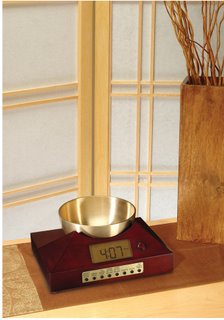 Singing Bowl Meditation Timer is Ideal for Morning Meditation Practice
Now & Zen’s Singing Bowl Meditation Timer Shop
1638 Pearl Street
Boulder, CO 80302
(800) 779-6383
Posted in Chime Alarm Clocks, Meditation Timers, Meditation Tools, mindfulness practice, Well-being, Zen Timers
 Once you experience the Zen Timepiece's progressive tones, you'll never want to meditate any other way. Last week, while trying to get downtown to a conference on integrating stress-reduction techniques into mainstream medicine, I felt my blood pressure rising. I was stuck in traffic, made several wrong turns that took me to the opposite side of the city, and entered a parking garage that turned out to be full—all causing me to miss a much-anticipated keynote speaker. When I finally got to the conference, I couldn’t get beyond my disappointment over missing the opening speaker and sat in the large lecture hall, halfheartedly taking notes and checking my BlackBerry every few minutes. Let’s just say I wasn’t fully present in the moment.
At lunch, I decided to head to a roundtable discussion given by Jon Kabat-Zinn, a psychologist famous for developing a stress-reduction technique called mindfulness, which he’s described in several bestselling books. Can’t hurt, I figured, hoping that he’d begin the session with a little meditation. (You can meditate with him on this YouTube video.) While he did not, in fact, lull me into meditative relaxation, he did very much get me to a mindful state of awareness. “I know you all have questions you’d like to ask or statements you’d like to make,” he said before opening the room up for discussion, “but while you’re waiting your turn, really listen to the other people speaking instead of framing the perfect sentence in your head.”
 It serves as the perfect meditation timer. Available in 5 wood styles, including bamboo. Of course, I thought, I always do that. Then I recalled a roundtable discussion that I’d attended the day before when I was distracted the entire time by trying to get my own question answered. Why isn’t the moderator calling on me? I silently seethed and even went so far as to interrupt another participant asking a question to try to piggyback my query onto his. This time, I resolved, I wasn’t going to ask any questions and was simply going to listen. I also wasn’t going to check my BlackBerry or my watch. I wasn’t going to think about missing the morning speaker or what the traffic would be like heading to my kids’ school for the carpool later that afternoon. I was simply going to, well, be.
I was rewarded with an insider’s look at what healthcare providers discuss among themselves. Many are struggling to help patients make real lifestyle changes. A New Jersey doctor, for example, asked how to deal with a workaholic CEO (a heart attack waiting to happen) who was convinced that cutting back his 70-hour workweek would sacrifice his career. “Most of my best ideas have come out of meditation,” responded Bill George, a Harvard Business School professor and the former chairman and CEO of the healthcare firm Medtronic. “I found that constant interruptions throughout my workday at Medtronic [which has 38,000 employees] left me with incomplete thoughts. Meditation every night gave me that clarity.” So, the solution lies in convincing masters of the universe that less work is actually more—not an easy task.
“I feel like I’m always mopping up problems,” complained another physician, who heads an integrative medicine unit at a university hospital. “I wish my patients would come to me before they’re sick to learn how to stay well.” Kabat-Zinn told him it lies within his power to make his practice what he wants it to be.
Some practitioners shared their own personal stories. A nurse stood up and asked how to get her teenage kids to meditate, something she thought could help them cope with their father’s terminal illness. “I wouldn’t push them,” advised Kabat-Zinn. “That could actually repel them from ever doing it. I’d just keep meditating yourself and spend time with them appreciating the moments, and perhaps they’ll come to it on their own.”
At the end of the session, I felt the same sort of relaxed, euphoric feelings that I generally experience after a workout. It was only after I exited the session that I remembered to check my BlackBerry. Then I shut it off and headed out into the sun of an unexpectedly warm winter day. On my walk back to the parking garage, I made a point of observing sidewalk repairs, guards laughing together by a security station in front of the State Department, and the statue of an ancient Greek posed with a discus at a small park that I passed. I even marveled at the ingenuity of an inner spiral ramp that led me out of the garage. I don’t know why, but those experiences left me calm and at peace with the world, a feeling that lasted until my mind became distracted, once again, by the responsibilities of everyday life.
By SARAH BALDAUF for US News
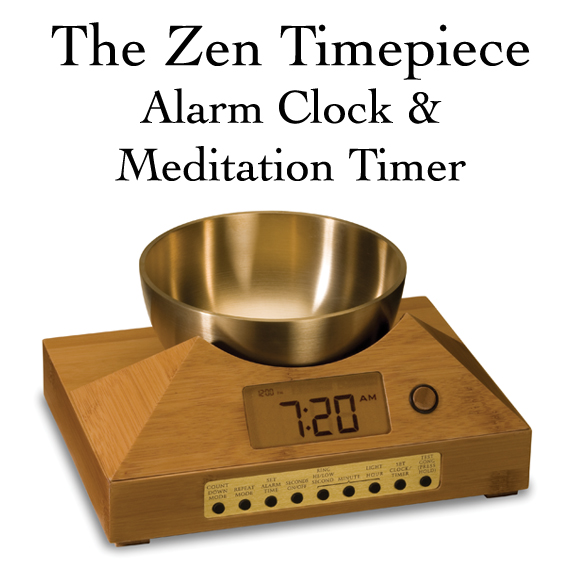 It serves as the perfect meditation timer. Available in 5 wood styles, including bamboo. Now & Zen – The Singing Bowl Meditation Timer Shop
1638 Pearl Street
Boulder, CO 80302
(800) 779-6383
orders@now-zen.com
Posted in Meditation Timers, Meditation Tools
 Meditation Practice, Stillness of Being For a formal practice to cultivate equanimity, begin with some calming breaths or a mantra meditation. Once you feel calm, reflect on your desire for happiness and freedom from suffering, both for yourself and for others. Contemplate your desire to serve the needs of others and to be compassionately engaged in the world. Acknowledge both the joy and the suffering that exist throughout the world—the good deeds and the evil ones. As you continue to breathe into your heart’s center, acknowledge the necessity of balancing your desire to make positive change in the world with the reality that you cannot control the actions of others.
Bring to mind the image of someone for whom you have no strong feelings one way or the other. With this person in your mind’s eye, repeat the following phrases to yourself, coordinating with the outbreath if you like:
- All beings like yourself are responsible for their own actions.
- Suffering or happiness is created through one’s relationship to experience, not by experience itself.
- Although I wish only the best for you, I know that your happiness or unhappiness depends on your actions, not on my wishes for you.
- May you not be caught in reactivity.
Feel free to use other similar, appropriate phrases of your own devising. After a few minutes, shift your attention to your benefactors, including teachers, friends, family and the unseen workers who keep the societal infrastructure working. Silently repeat the phrases to yourself as you contemplate these benefactors.
After several minutes, begin to reflect on your loved ones, directing the phrases to them, followed by the difficult people in your life. While feeling kindness, compassion, and joy for those we love comes more easily than it does for those with whom we have difficulty, it is often the opposite with equanimity. It’s a lot easier to accept that those we dislike are responsible for their own happiness than it is for those we care for deeply, because we feel more attachment to them. Whatever your experience, simply note any reactivity and see if you can be equanimous with your reactivity! Broaden your reach after a few minutes to include all beings everywhere throughout the world, and then finally contemplate equanimity in regard to yourself, noticing how taking responsibility for your own happiness and unhappiness can feel the hardest of all.
- All beings, including myself, are responsible for their own actions.
- Suffering or happiness is created through one’s relationship to experience, not by experience itself.
- Although I wish only the best for myself, I know that my happiness or unhappiness depends on my actions, not my wishes for myself.
- May I not be caught in reactivity.
adapted from Yoga Journal by Frank Boccio
Frank Jude Boccio is a teacher of yoga and Zen Buddhism and the author of Mindfulness Yoga. Find him at mindfulnessyoga.net.
 Meditation Timer for Your Meditation Practice The Walnut Digital Zen Clock’s long-resonating Tibetan bell-like chime makes waking up and meditating a beautiful experience – its progressive chimes begin your day with grace. When the clock’s alarm is triggered, the acoustic chime bar is struck just once … 3-1/2 minutes later it strikes again … chime strikes become more frequent over 10 minutes … eventually striking every 5 seconds until shut off. As they become more frequent, the gentle chimes will always wake you up or bring you out of your meditation. Your body really doesn’t need to be awakened harshly, with a Zen Clock you’re awakened more gradually and thus more naturally. Unlike artificial recorded sounds coming out of a tiny speaker in a plastic box, natural acoustic sounds transform your bedroom or office environment.
The Digital Zen Clock also serves as a countdown and interval timer for yoga, meditation, bodywork, etc.; and it can also be set to chime on the hour as a tool for “mindfulness.”
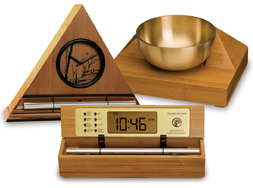 Find the Entire Family of Meditation Timer and Gongs at Now & Zen's Store in Boulder Now & Zen’s Meditation Timer Store
1638 Pearl Street
Boulder, CO 80302
(800) 779-6383
Posted in intention, Meditation Timers, Meditation Tools, mindfulness practice, Well-being, Zen Timers
 Once you experience the Zen Timepiece's progressive tones, you'll never want to meditate any other way. It serves as the perfect meditation timer. KOITSU -- Full Moon at Akashi Beach Study authors say earlier use of such treatments might benefit health-care system
THURSDAY, May 12 (HealthDay News) — Mind-body therapies such as yoga, meditation and deep-breathing exercises appear to be gaining more acceptance in mainstream medicine, according to a new study.
Mind-body therapy is used by more than one-third of Americans, and that number is rising, the researchers noted. They found that one in 30 Americans using some type of mind-body therapy was referred to the treatment by a medical provider.
“There’s good evidence to support using mind-body therapies clinically,” the study’s lead author, Dr. Aditi Nerurkar, an integrative medicine fellow at Harvard Medical School and Beth Israel Deaconess Medical Center in Boston, said in a news release from Beth Israel. “Still, we didn’t expect to see provider referral rates that were quite so high.”
Nerurkar and her colleagues analyzed data from more than 23,000 households that took part in the 2007 U.S. National Health Interview Survey. Nearly 3 percent of the people in those households, or about 6.3 million people, used mind-body therapies after referral by a mainstream medical provider, the study found. These people tended to be sicker and used the health-care system more than people who started using the therapies without a referral.
“What we learned suggests that providers are referring their patients for mind-body therapies as a last resort once conventional therapeutic options have failed,” Nerurkar said. “It makes us wonder whether referring patients for these therapies earlier in the treatment process could lead to less use of the health-care system and, possibly, better outcomes for these patients.”
The study is published in the May 9 issue of Archives of Internal Medicine.
 Once you experience the Zen Timepiece's progressive tones, you'll never want to meditate any other way. It serves as the perfect meditation timer. KOITSU -- Full Moon at Akashi Beach “These data suggest that mind-body therapies have really become a mainstream approach to care,” Dr. Russell Phillips, chief of primary care at Beth Israel and the study’s senior author, said in the news release. “But more research is needed to guide physician and patient decision-making regarding their use.”
Meditation is generally an inwardly oriented, personal practice, which individuals do by themselves. Meditation may involve invoking or cultivating a feeling or internal state, such as compassion, or attending to a specific focal point. The term can refer to the state itself, as well as to practices or techniques employed to cultivate the state. There are dozens of specific styles of meditation practice; the word meditation may carry different meanings in different contexts. Meditation has been practiced since antiquity as a component of numerous religious traditions. A 2007 study by the U.S. government found that nearly 9.4% of U.S. adults (over 20 million) had practiced meditation within the past 12 months, up from 7.6% (more than 15 million people) in 2002.
Although meditation can be done in almost any context, practitioners usually employ a quiet, tranquil space, a meditation cushion or bench, and some kind of timing device to time the meditation session. Ideally, the more these accoutrements can be integrated the better. Thus, it is conducive to a satisfying meditation practice to have a timer or clock that is tranquil and beautiful. Using a kitchen timer or beeper watch is less than ideal. And it was with these considerations in mind that we designed our Gong Meditation Timer. This unique “Zen Clock” features a long-resonating acoustic chime that brings the meditation session to a gradual close, preserving the environment of stillness while also acting as an effective time signal. The Digital Zen Clock can be programmed to chime at the end of the meditation session or periodically throughout the session as a kind of sonic yantra. The beauty and functionality of the Gong Meditation Time/Clock makes it a meditation tool that can actually help you “make time” for meditation in your life.
More information: The U.S. National Institutes of Health has more about mind-body therapy. — Robert Preidt
SOURCE: Beth Israel Deaconess Medical Center, news release, May 9, 2011
 The Gong Meditation Timer Shop, Boulder, Colorado Now & Zen – The Gong Meditation Timer Store
1638 Pearl Street
Boulder, CO 80302
(800) 779-6383
orders@now-zen.com
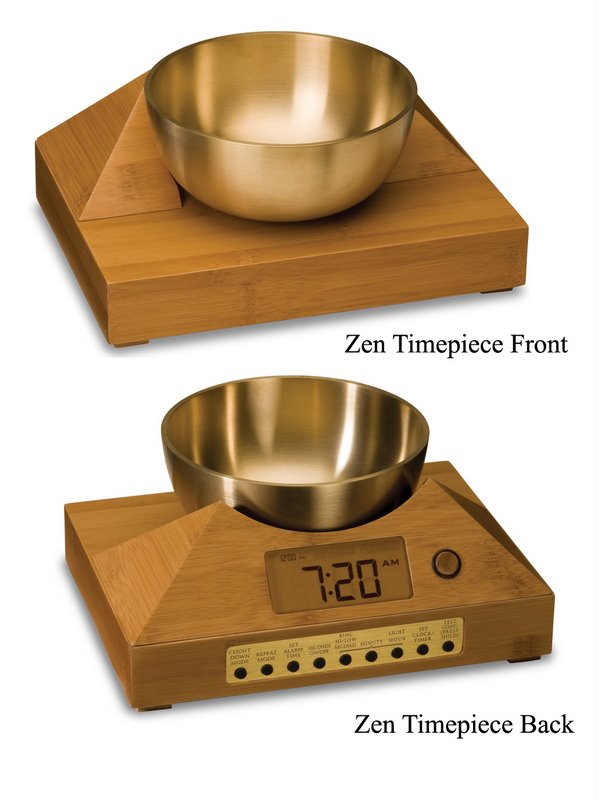 Once you experience the Zen Timepiece's progressive tones, you'll never want to meditate any other way. It serves as the perfect meditation timer.
Posted in Meditation Timers, Meditation Tools
 Once you experience the Zen Timepiece's progressive tones, you'll never want to meditate any other way. New research indicates chanting and meditation help enhance mind/body health and balance. A study by the University of California-San Diego, the Alzheimer’s Prevention Foundation International, and the Amen Clinic of Newport Beach, California, found that Kirtan Kriya, a simple twelve minute Kundalini yoga meditation, increased oxygen delivery, blood flow, and energy in the brain, while improving neurotransmitter (chemical messengers of the brain that communicate with the body) function.
Kirtan Kriya involves chanting the Sanskrit words ‘Sa’ (meaning birth or cosmos), ‘Ta’ (life), ‘Na’ (completion), and ‘Ma’ (signifying rebirth). Here’s how to practice it: Repeat ‘Sa Ta Na Ma’ with your eyes closed while sitting with a straight spine; focus your mental energy on the area between your eyebrows. For two minutes, chant in your normal speaking voice; for the following three minutes, whisper. For the next three minutes, chant silently. Then reverse the order; whispering for two minutes and chanting the mantra aloud for two minutes. Enjoy your enlightenment!
 It's exquisite sounds summon your consciousness out of your meditative state with a series of subtle gongs. Use our unique “Zen Clock” which functions as a Yoga & Meditation Timer. It features a long-resonating acoustic chime that brings your meditation or yoga session to a gradual close, preserving the environment of stillness while also acting as an effective time signal. Our Yoga Timer & Clock can be programmed to chime at the end of the meditation or yoga session or periodically throughout the session as a kind of sonic yantra. The beauty and functionality of the Zen Clock/Timer makes it a meditation tool that can actually help you “make time” for meditation in your life. Bring yourself back to balance.
adapted from Healinglifestyles.com by Kyle Roderick
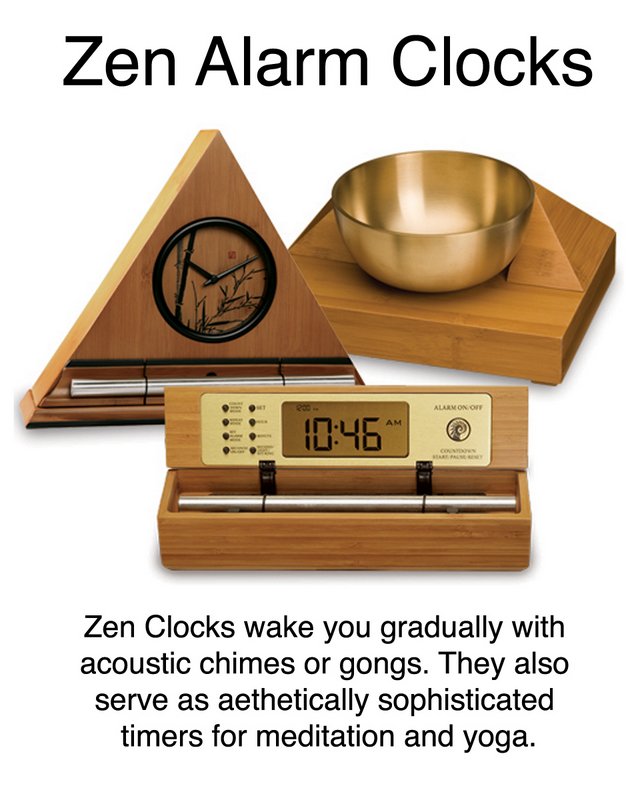 Zen Alarm Clocks, made by Now & Zen, Inc., come in a variety of shapes and sizes. Now & Zen – The Tibetan Singing Bowl Meditation Timer
1638 Pearl Street
Boulder, CO 80302
(800) 779-6383
orders@now-zen.com
Posted in Meditation Timers, Meditation Tools, mindfulness practice
« Previous Page — « Previous Entries
Next Entries » — Next Page »
|
|
|
|